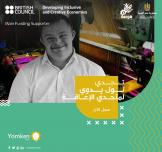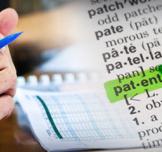Innovation Activity: balance is poised for change

This Article was first published on: Innovation Excellence
Is the digital technology we see that is emerging going to be able to provide the positive tension between rational and randomness that takes place in our innovation activities today?
Will digital begin to dominate our innovation thinking, will we lose this randomness?
Randomness offers that spark of human creativity or will digital be allowing this to connect multiple strands in new, more exciting ways?
How are we going to adjust to the changing way technology will impose itself on our innovation activities and needs?
How will all this Mobile Connectivity, Cloud Computing, Social Media, Crowdsourcing, Internet of Things, Industrial internet, Big Data, Analytics, 3D Printing and Scanning be presented and managed as a part of successful business scenarios and intertwined with changes of social behavior?
Are our existing innovation systems ready for this potentially set of sweeping changes of knowledge inflows and translation, so they can be successfully commercialized into new innovation?
It is through searching for and seeking engagement in the ‘wider’ world we will begin to make greater connects and receive potentially enormous amounts of (raw) data, about interactions, performance, possible issues and connecting, previously fragmented and dispersed information and through analytics turn this into emerging valuable knowledge.
Rational and Random thinking can be accommodated with digital technologies
Technology has spawned operating systems that are more often set up to be searching for the rational, for the known, for the patterns by setting up the system hierarchy, by ensuring a coherent input of facts and data,
This can allow you to automate the process and generate greater outcomes that give you scale, make considerable processing saving, and gain increasing efficiencies by the constant quest for improvement and automation.
We are equally seeing more random pattern recognition, matching, ‘crunching’ data to offer up multiple scenarios. Then we begin to see equally a big move in where you store this data, those ‘data lakes’ where you can constantly revisit and draw down raw data, in new and different ways. For managing significant data the cloud offers a significant alternative than on-premise.
The equal measure of delivering randomness
Thankfully the quest to extract intelligence out of the raw data has equally kept the randomness side moving along in equal measure. It is this side that is making the big leap through these emerging technology changes of social media, smart mobility, sensors and other machine intelligence that is generating vast new levels of data. This big data requires analysis and the analytical aspects coming from exploiting different algorithms, will allow for greater insights into all the activities taking place.
There is even more of a promise that artificial intelligence can combine with human intelligence in significantly different ways, to generate new growth and deliver those richer, higher scale, more innovative business outcomes, that this investment being undertaken will be required to bring.
What needs changing is the innovation process to accommodate these changes
The arrival of big data is full of bytes, both terabytes but also big, huge strategic bites! We seem to be in a really evolutionary period, with the explosion of change taking place in the post-digital world of cloud, big data, social and interconnected devices.
The discovery of insights from all this embedded intelligence, social activity and data analytics is leading us to potentially manage a significant wave of new innovation opportunities from this digital knowledge.
Managing this transformation is a real strategic and operational challenge
We will need to transform much within our systems but more importantly, to orientate our skills to receive, translate and diffuse new knowledge, in significantly different ways.
It is through this combination of people and ‘things’ connecting into our businesses that we will be able to extract new observations, to give us insights that can lead to completely different innovation opportunities. That is the promise of this ‘fat juicy carrot’, providing fresh growth, new innovation opportunities, that have real value and worth.
Insights and ideas will become a real log jam attempting to enter the innovation pipeline
As it stands I can see a potentially a damaging build-up, or a log jam of promising concepts all desperately trying to work themselves through the innovation funnel. Either decisions or the existing disciplines have to be radically altered, where we take on a much higher risk profile to enable these to move from idea to finished product or new service, or we accept the consequences of different failures, growing frustrations or variable revenue metrics against the cost invested.
Cranking up the innovation throughput needs radically different approaches than at present
The innovation pipeline today is very manual, it needs human intervention, in decisions, in inputs, in what is communicated, what is approved or dropped. Innovation gets often weighed down by human intervention.
Will this change, if so what is required is for the innovation process to become more automated where predictive decisions or probability ratings are presented more from technology design and digital information? What changes are needed, who will be willing to invest in this radical redesign of the innovation system?
Radical smart-connected and digitally discovered concepts will radically alter the value proposition as I have outlined before. These will need the internal business structures to alter and deliver new business models to respond in unique market ways.
That will call for bold leadership and radical redesigns of much within our organizations to allow greater innovation to flow out to the market to capitalise on these increasing levels of insights coming from a more digitally connected front end.
I wish I could ‘feel’ the same dynamics and emphasis on downstream systems being able to manage this data rush heading down towards us but I don’t. I think we might all become simply overwhelmed, let’s hope not.
Photo Credit: Bigstockphoto





































































EgyptInnovate site is not responsible for the content of the comments